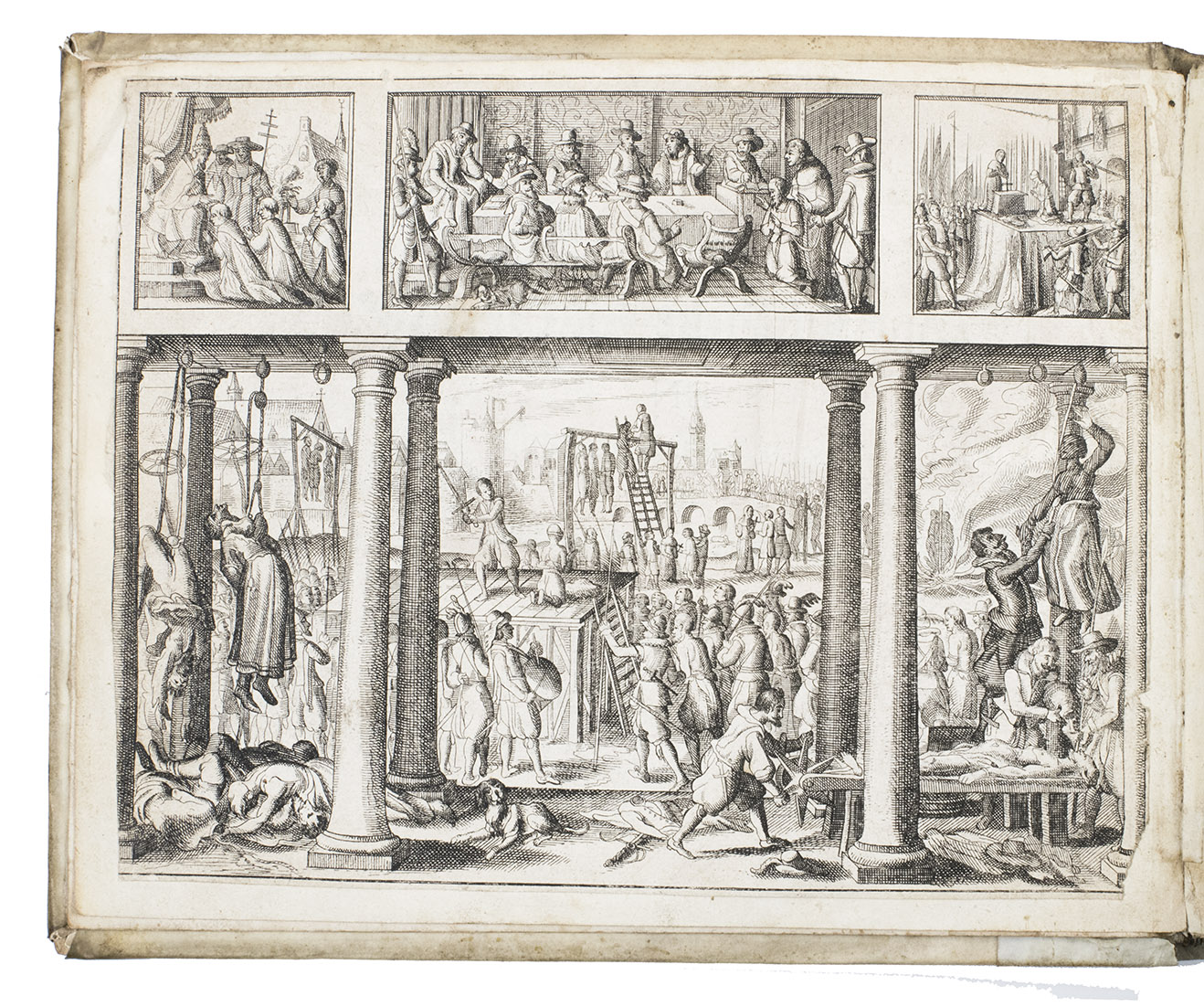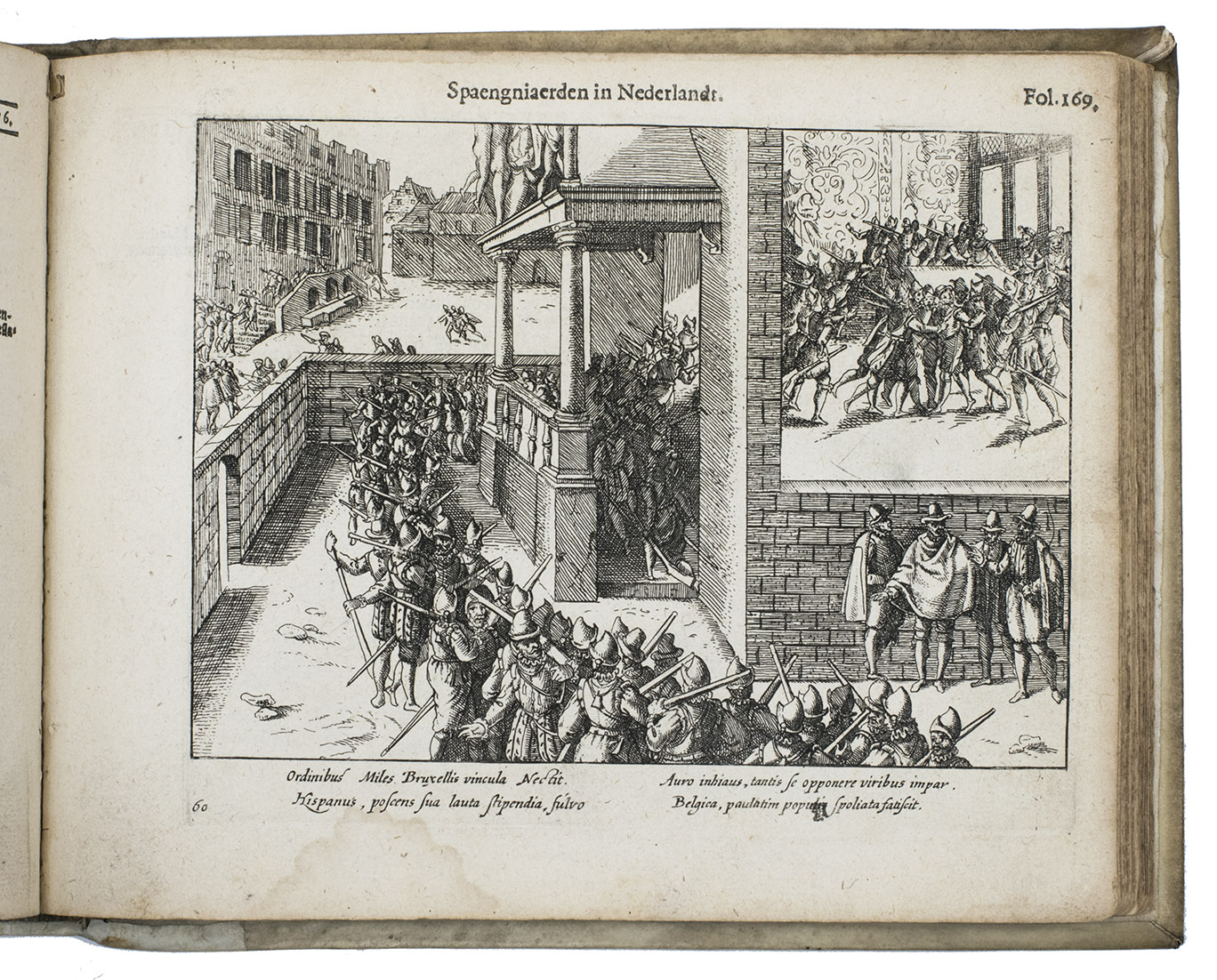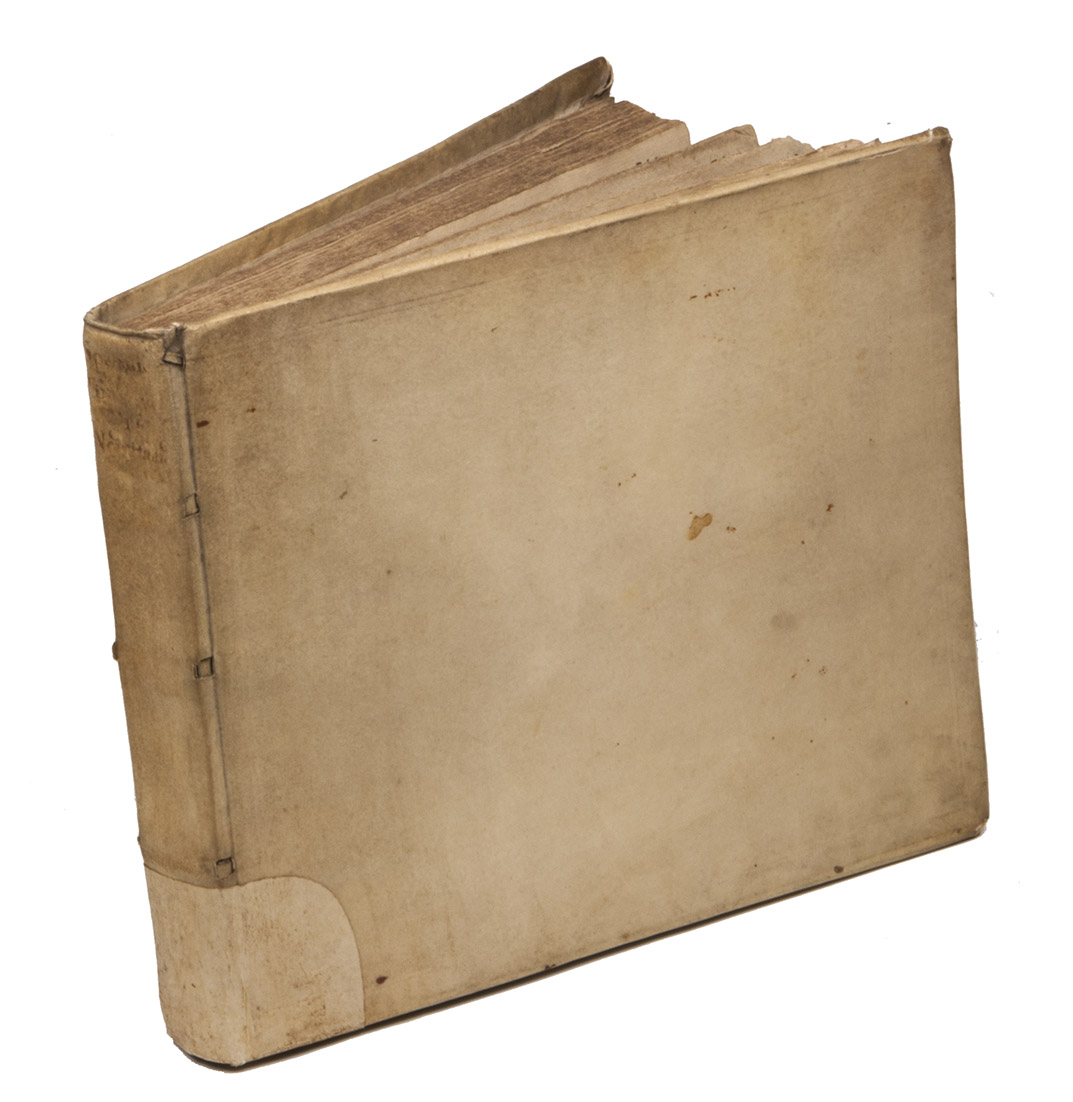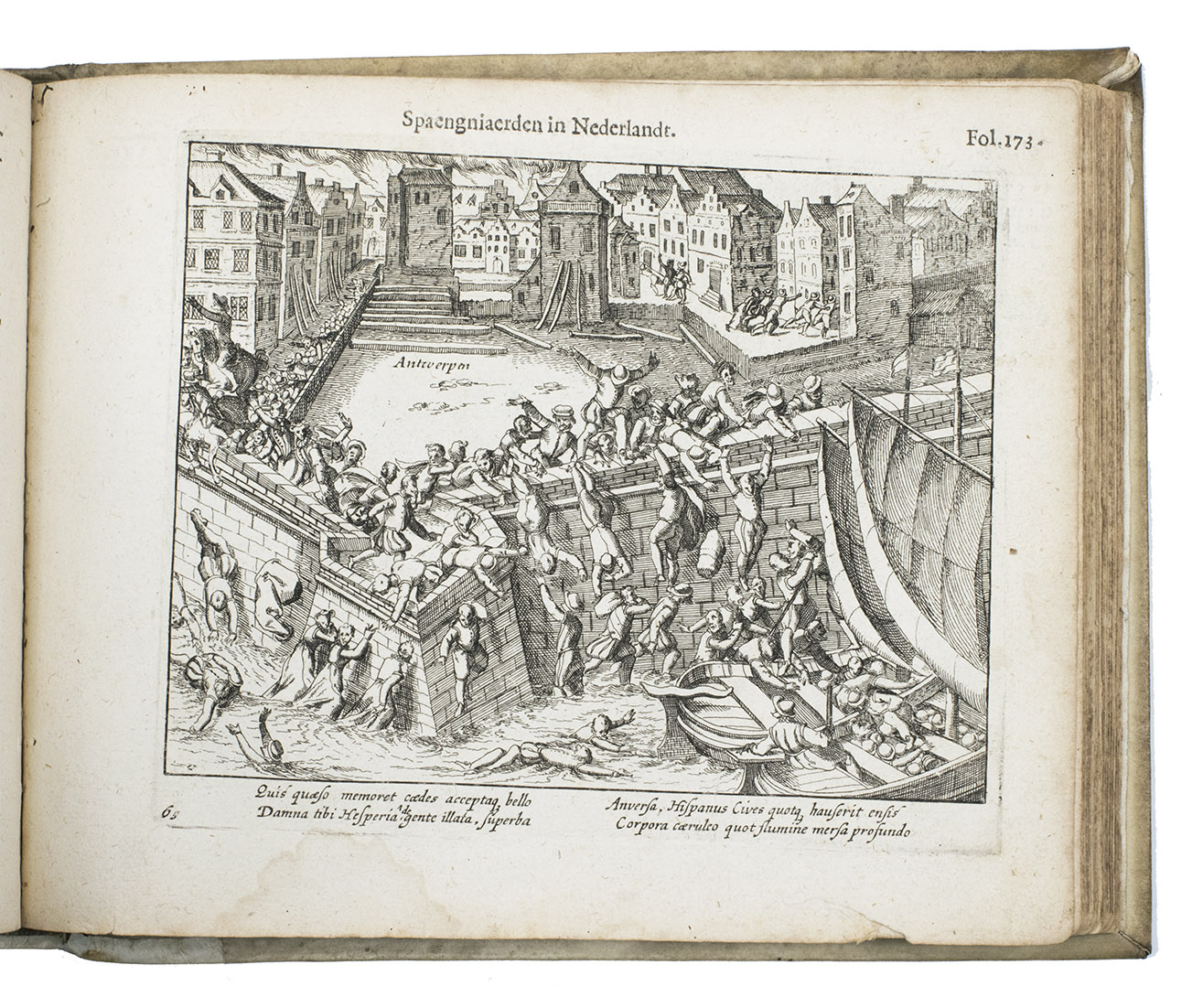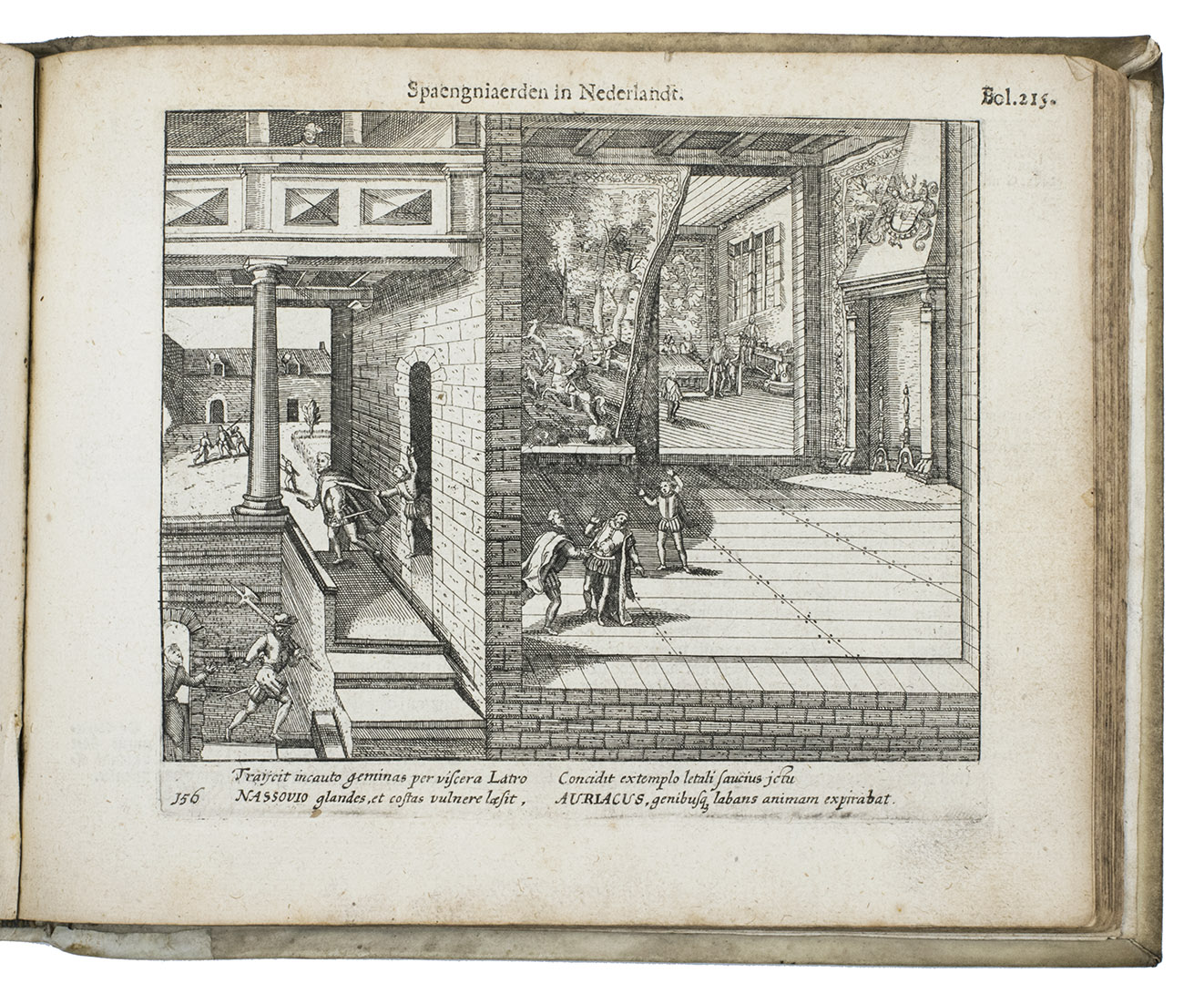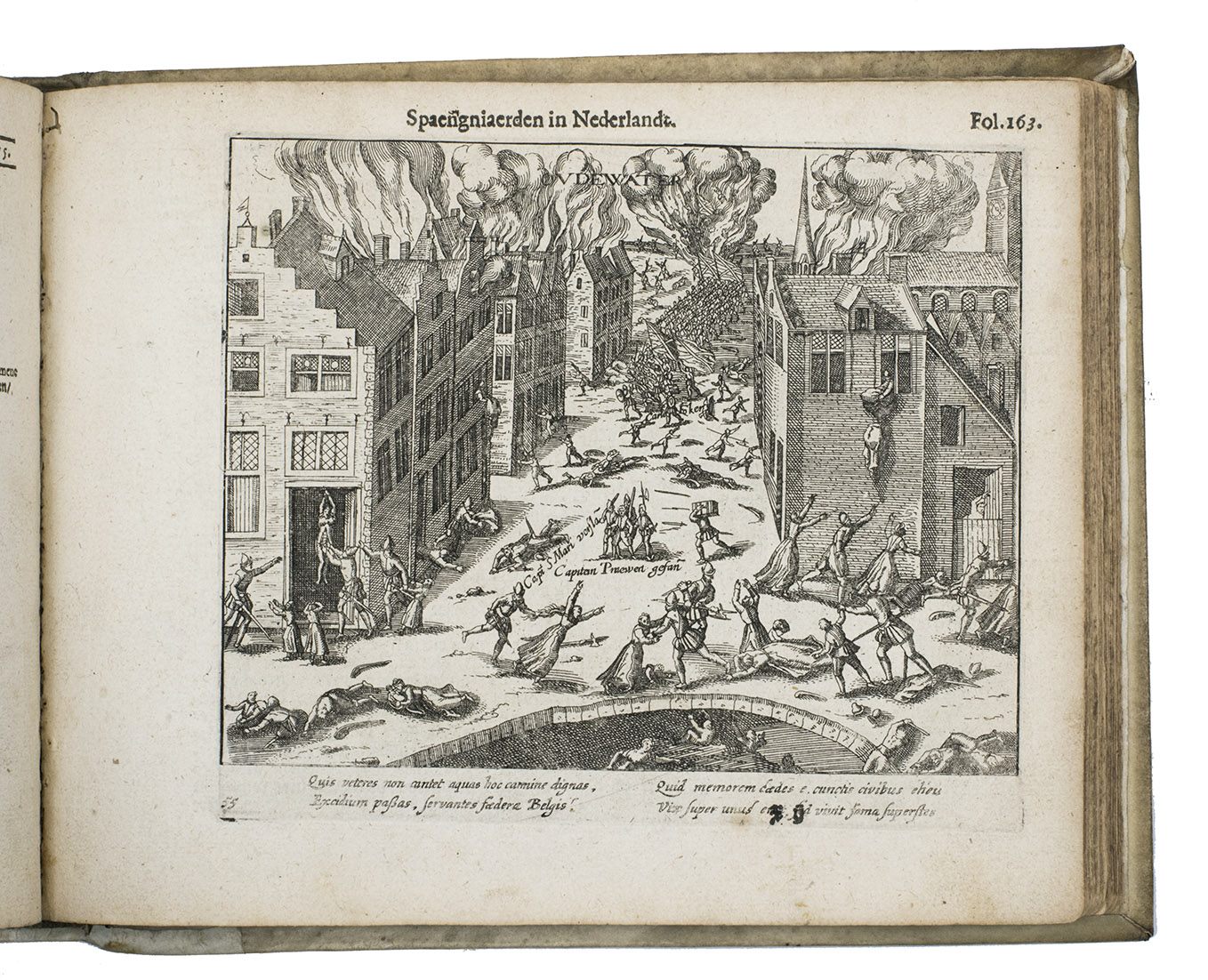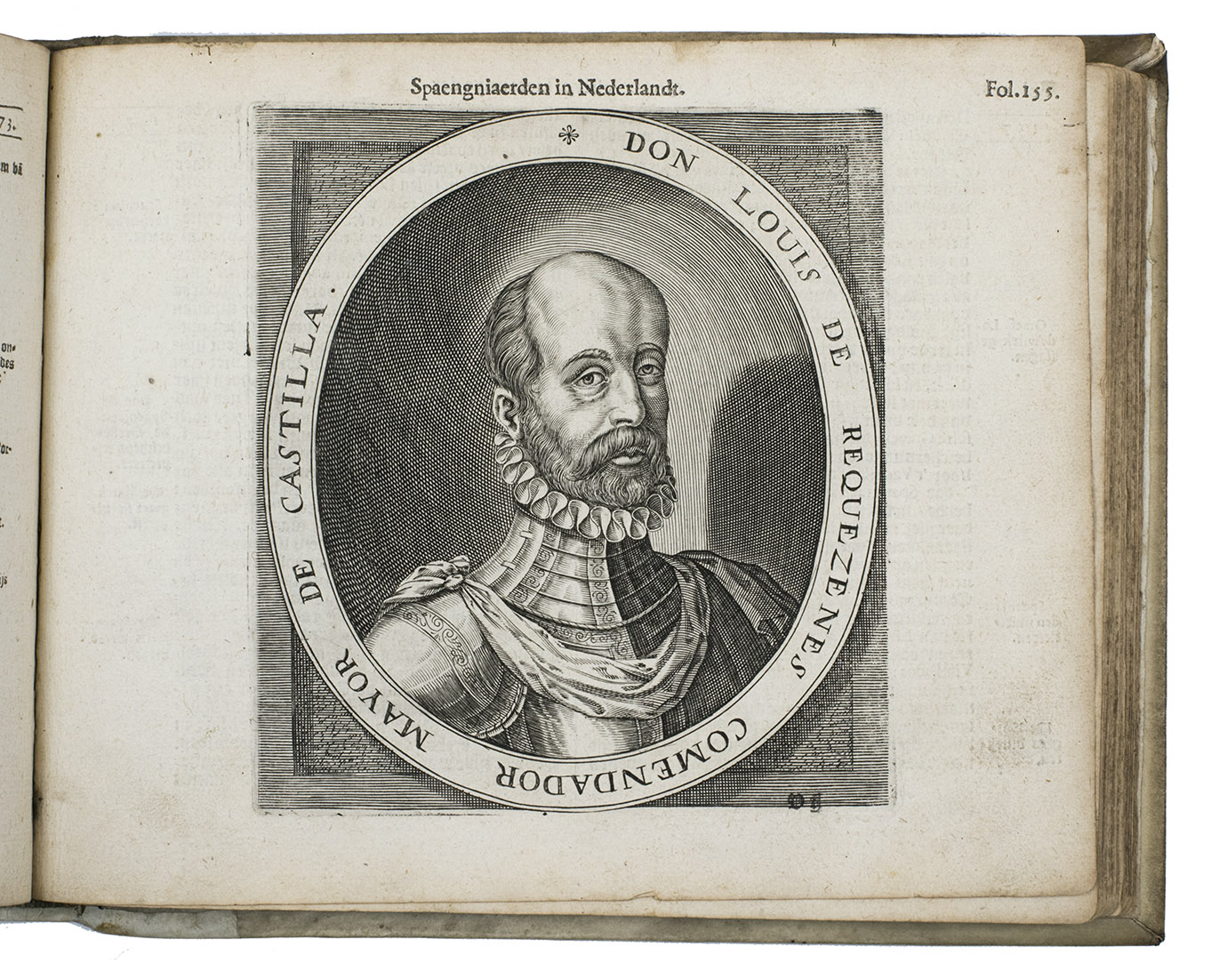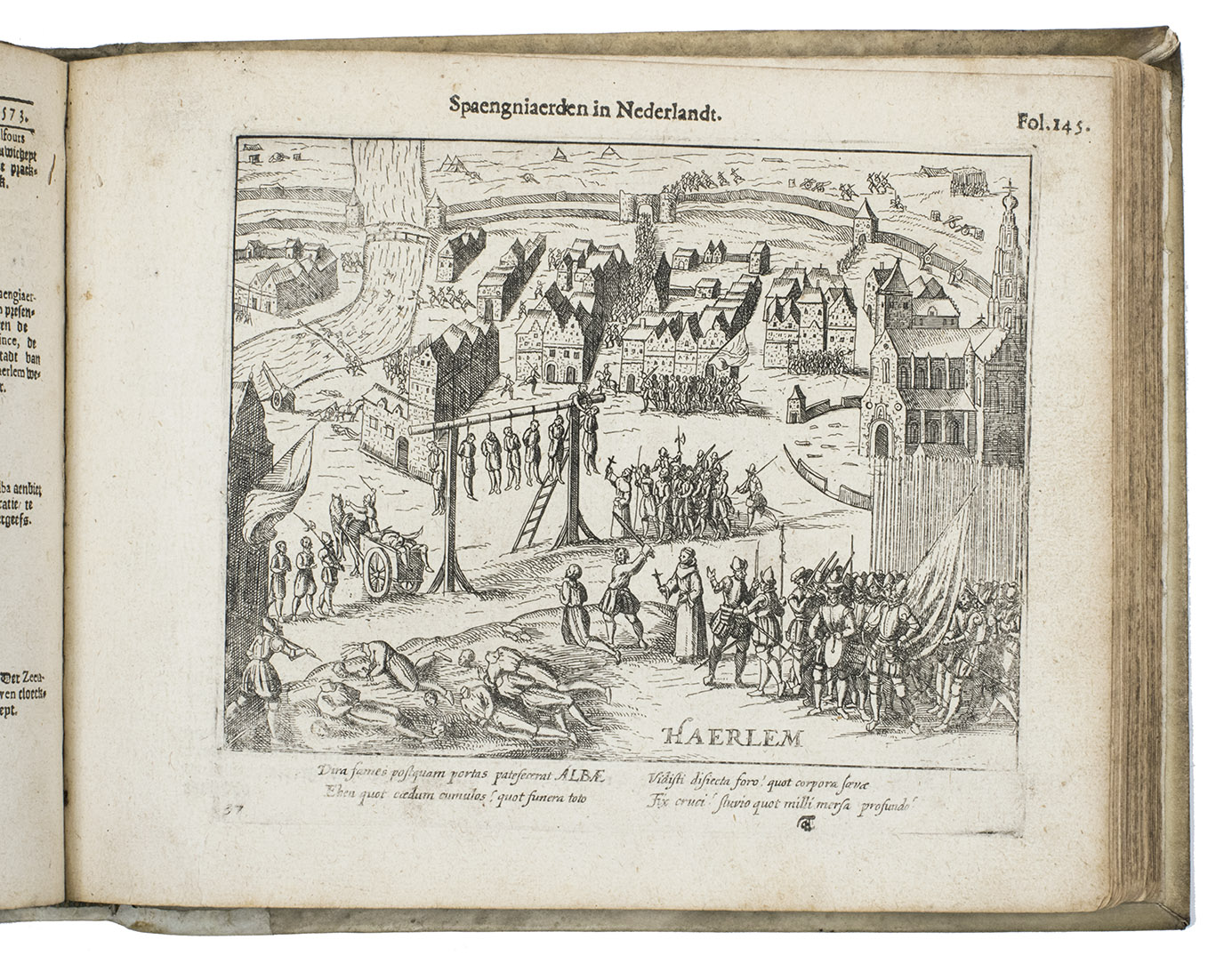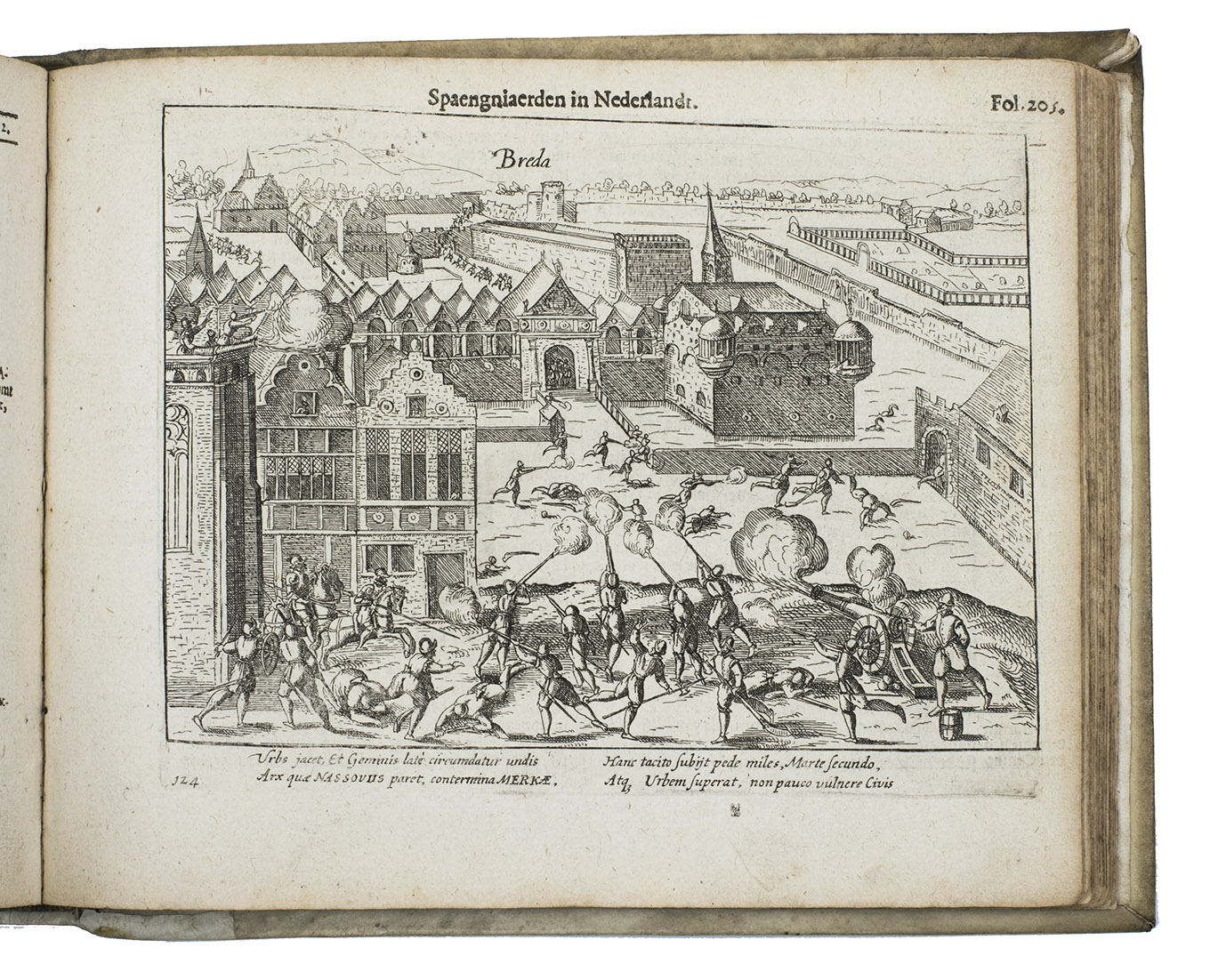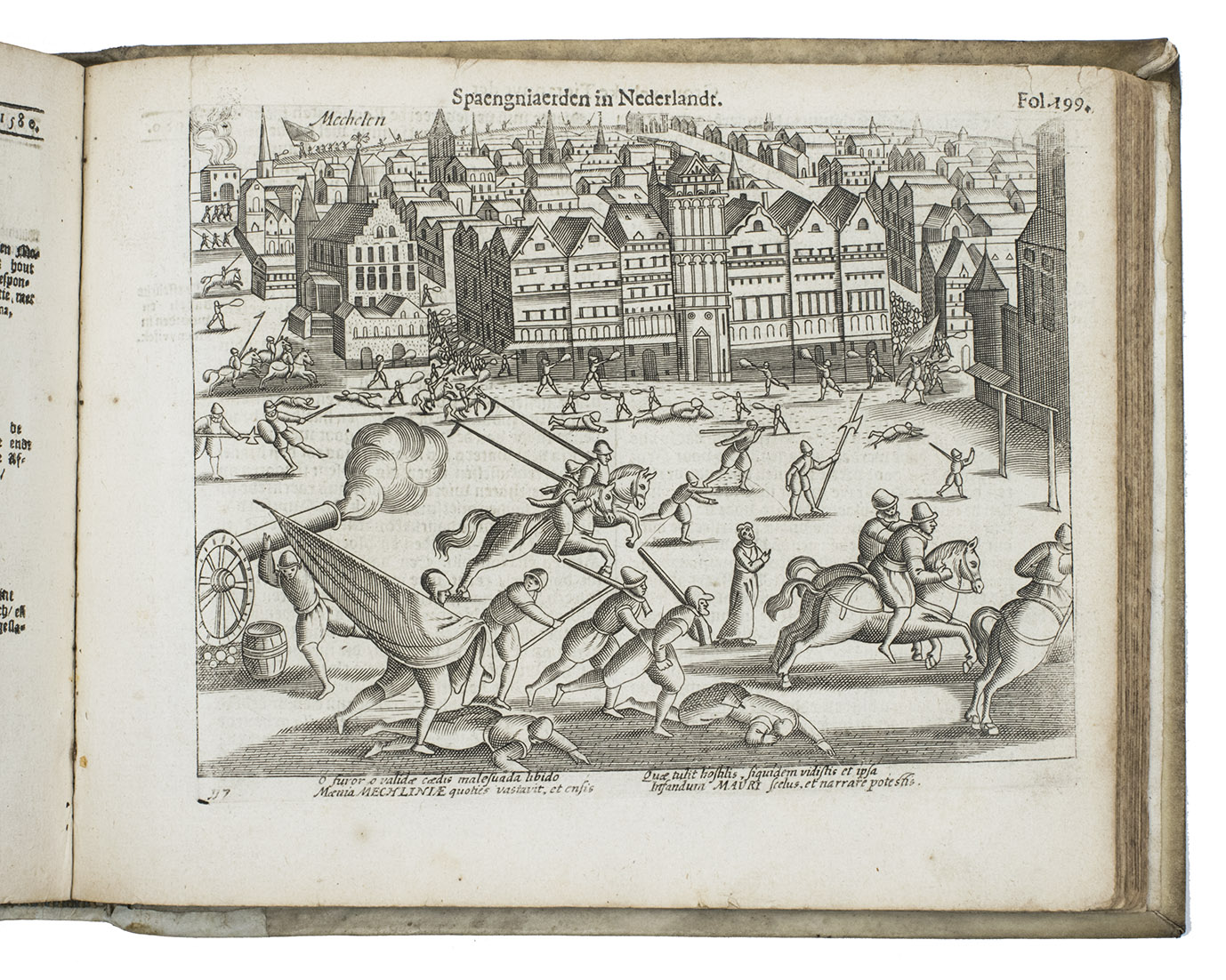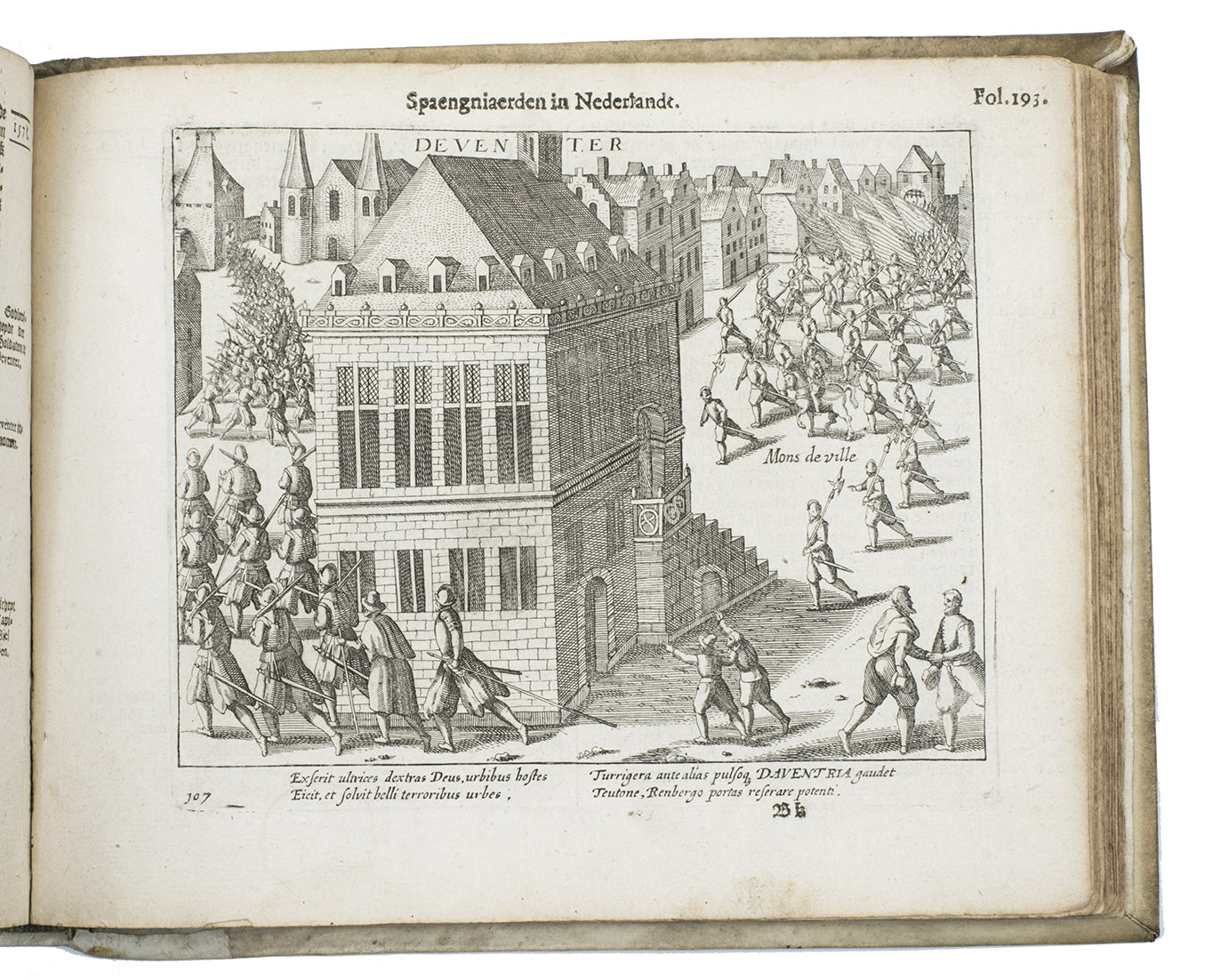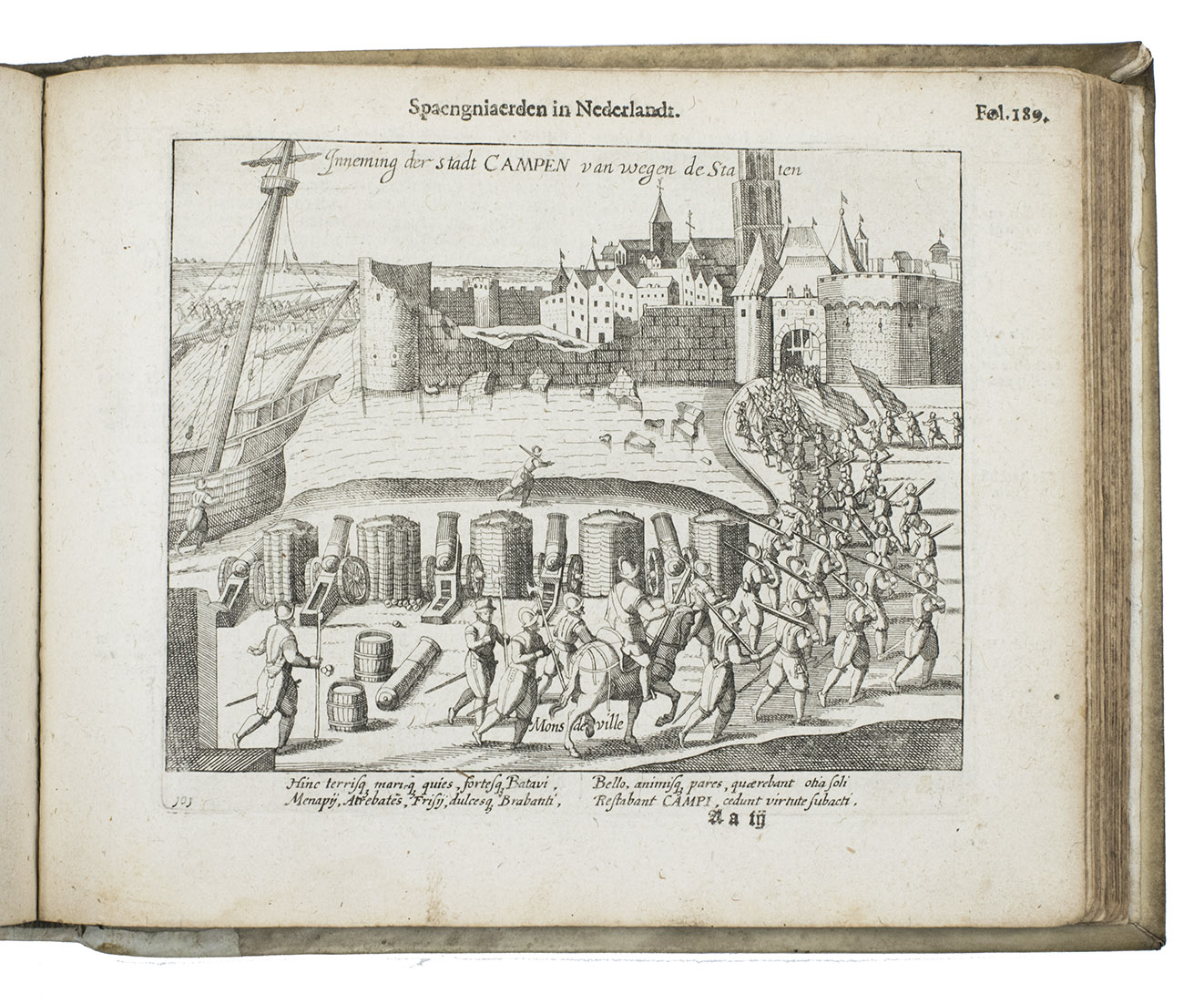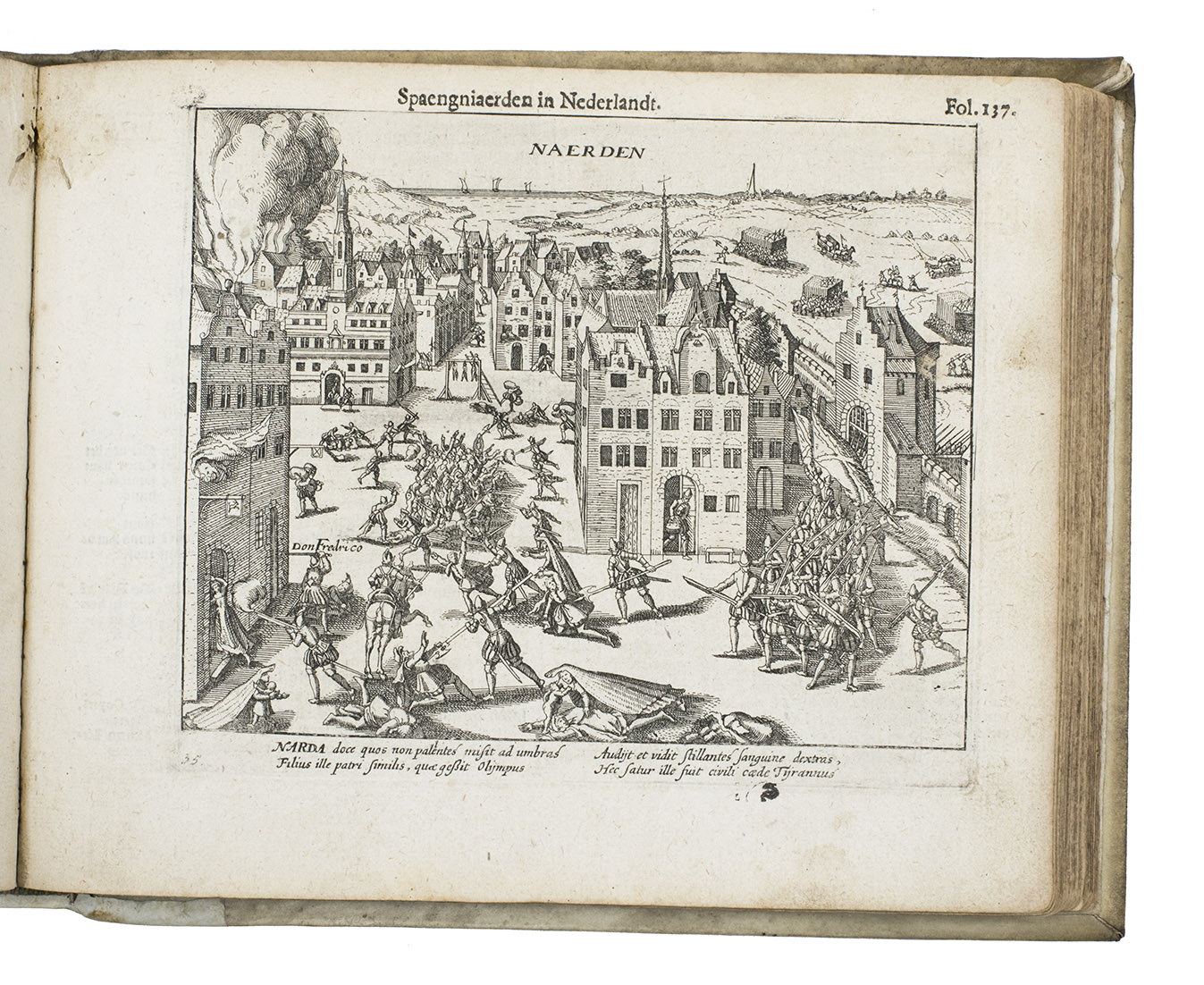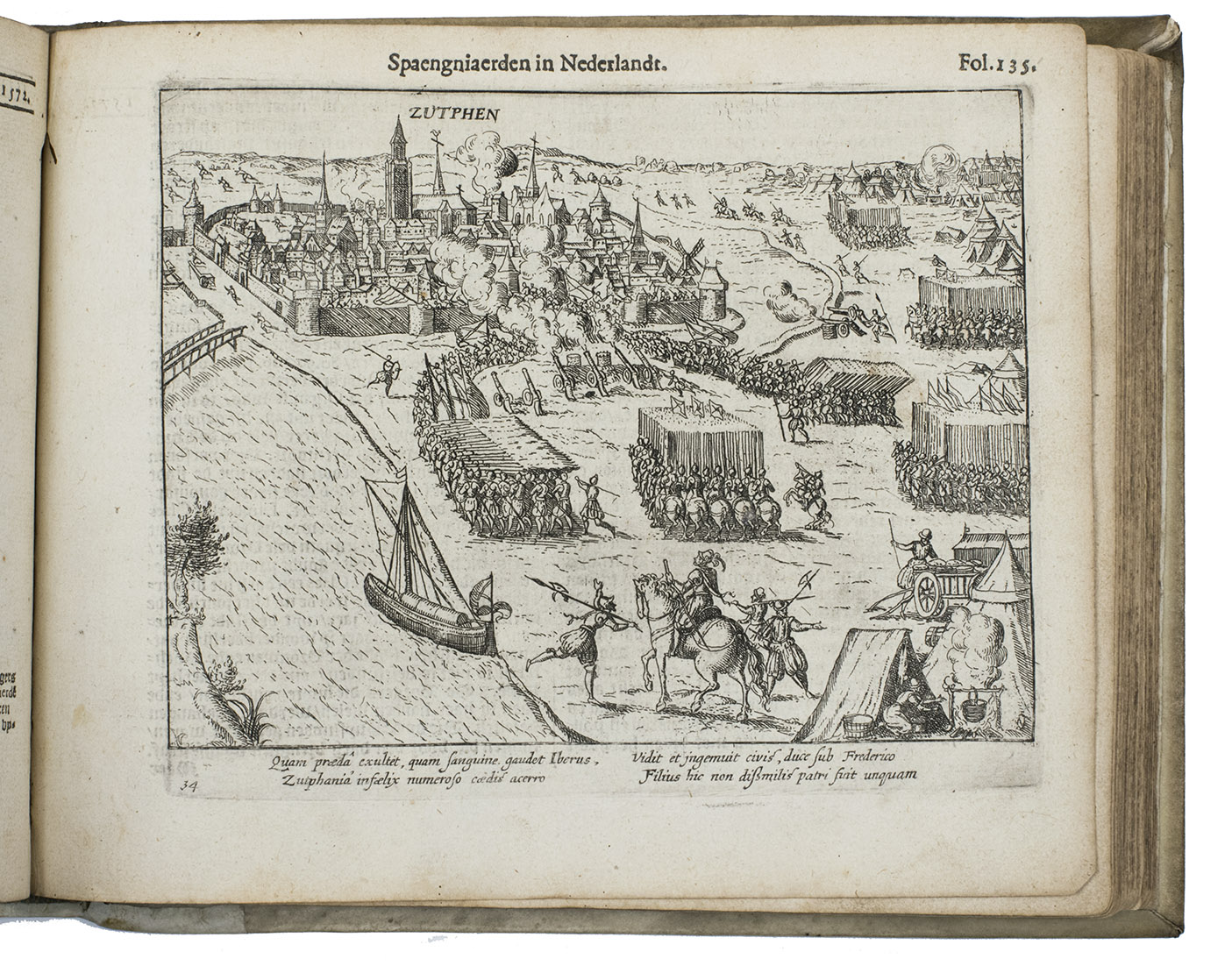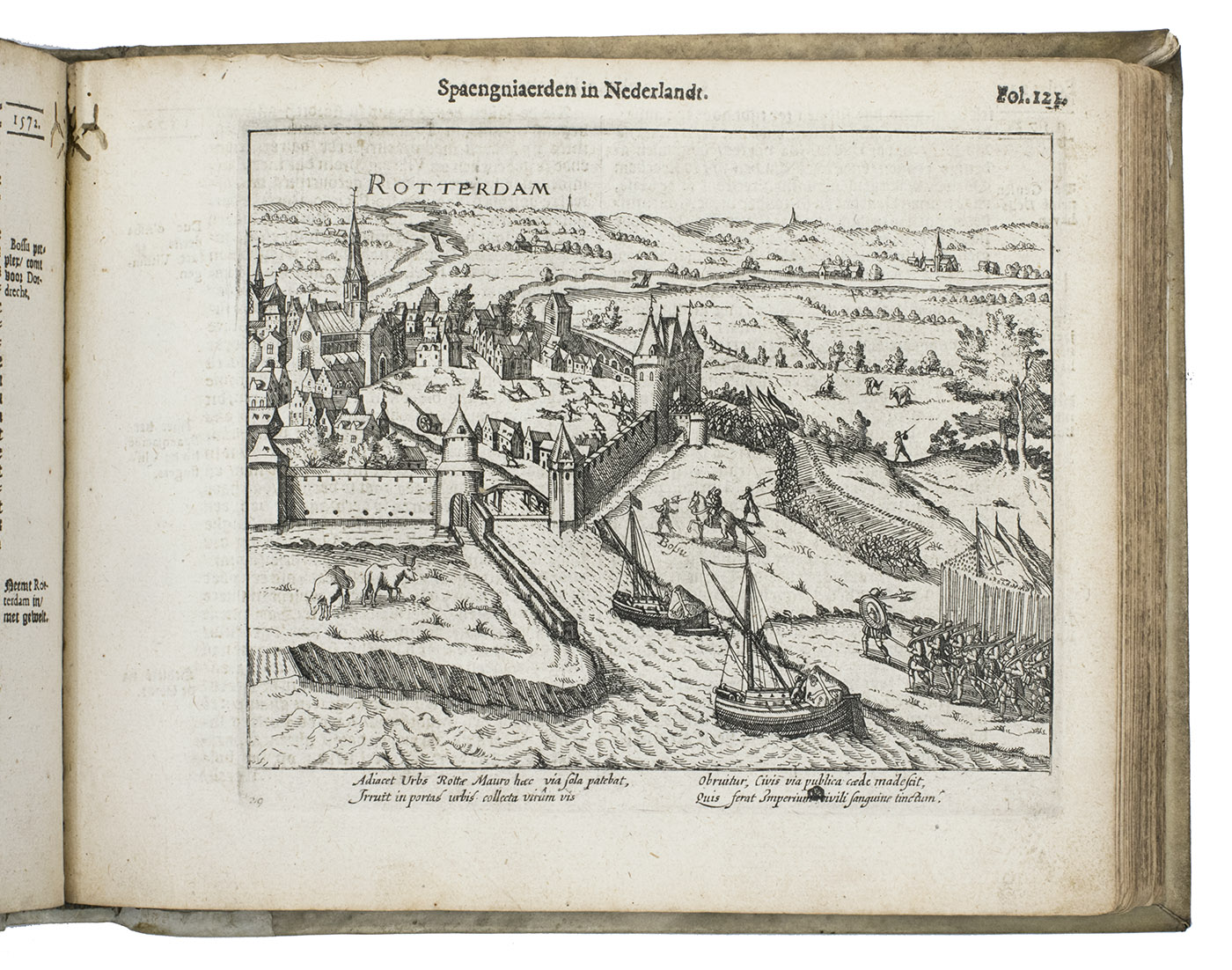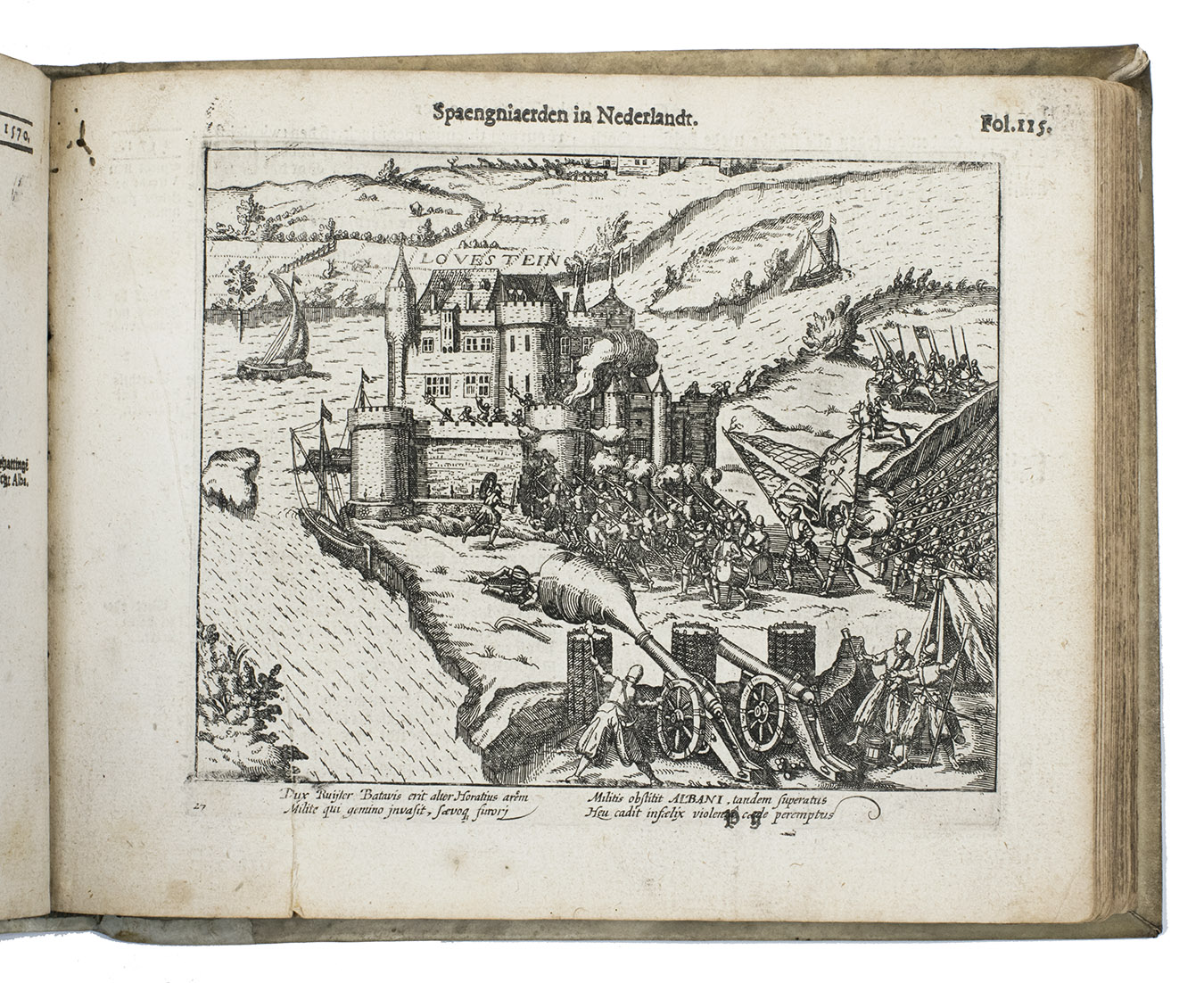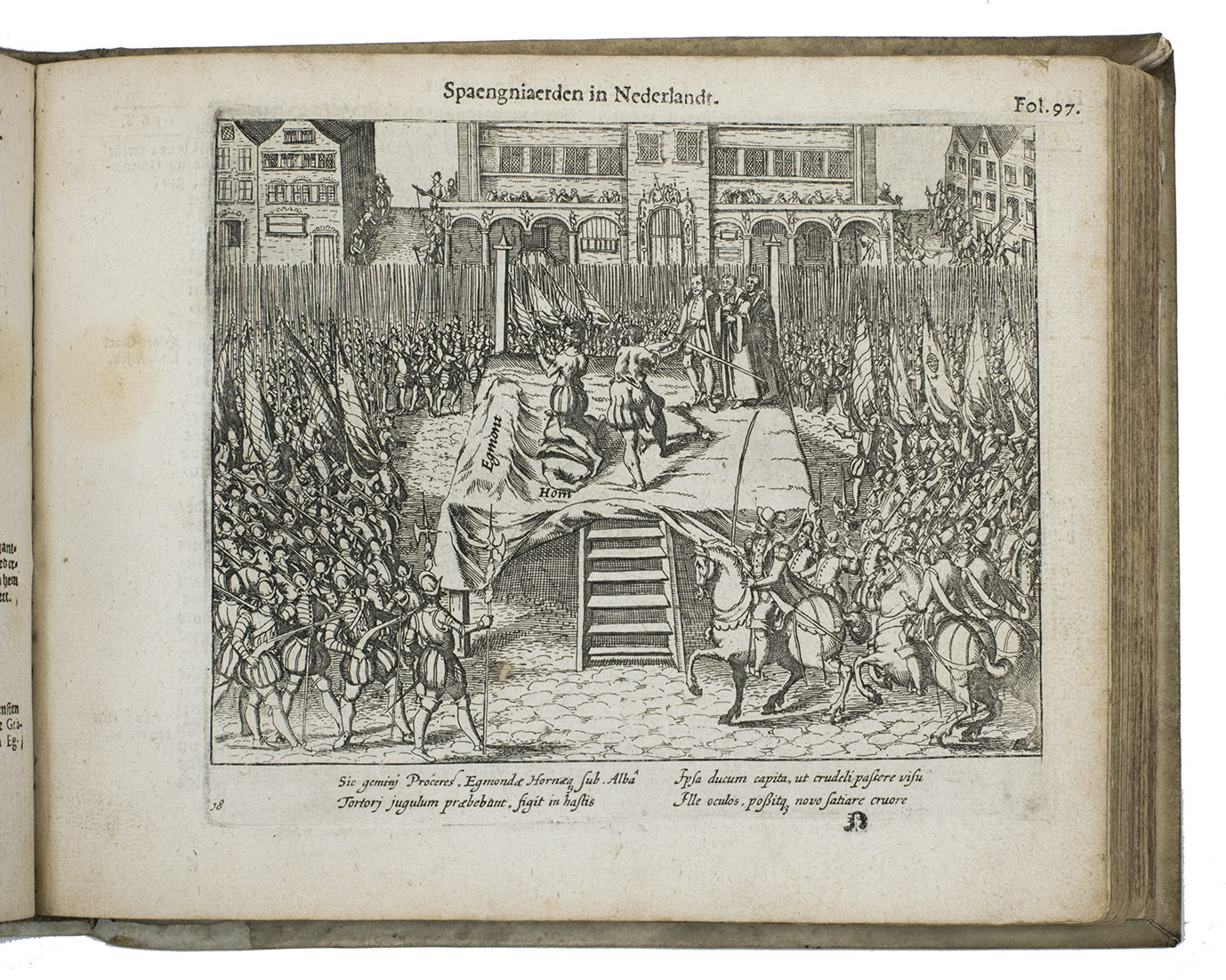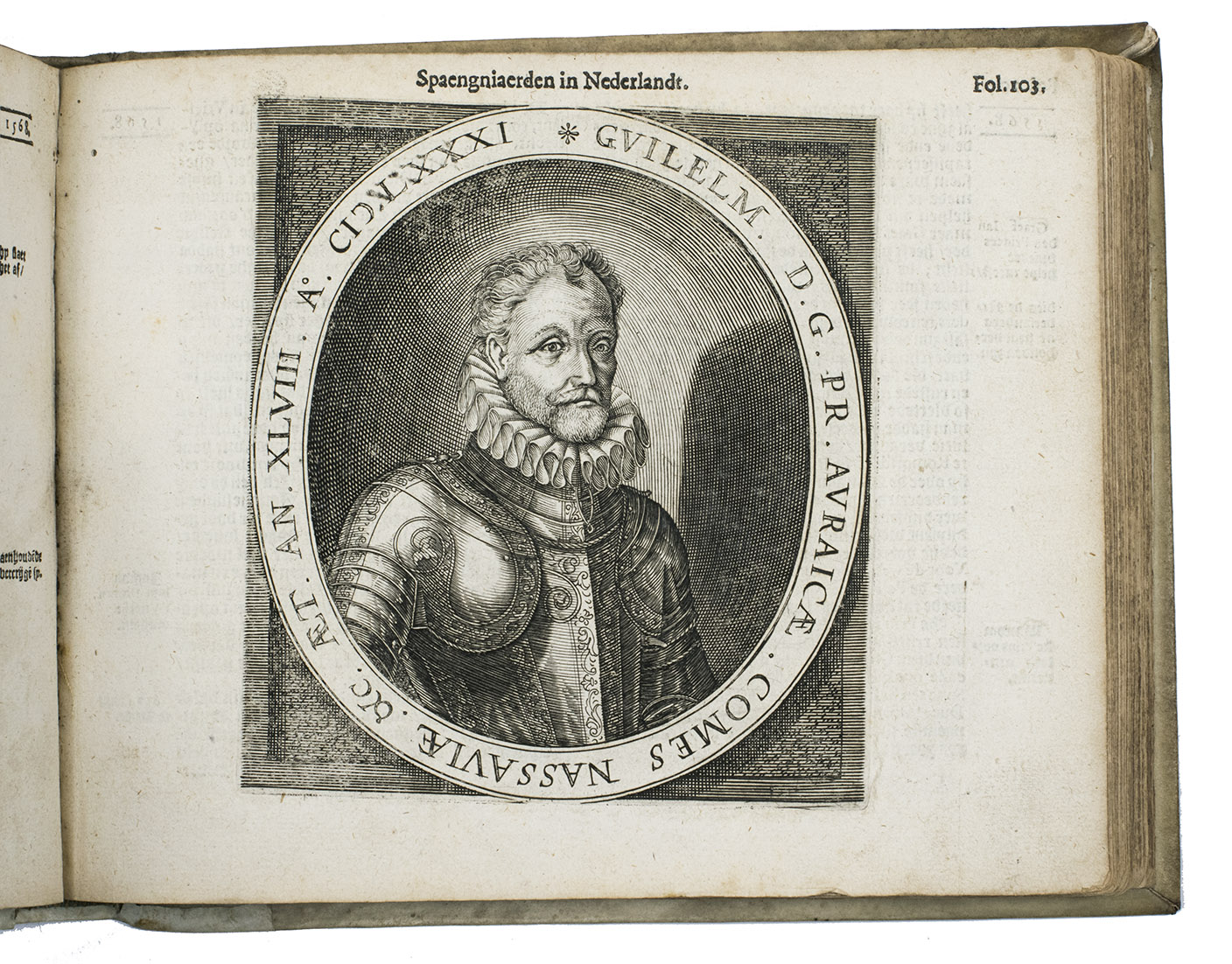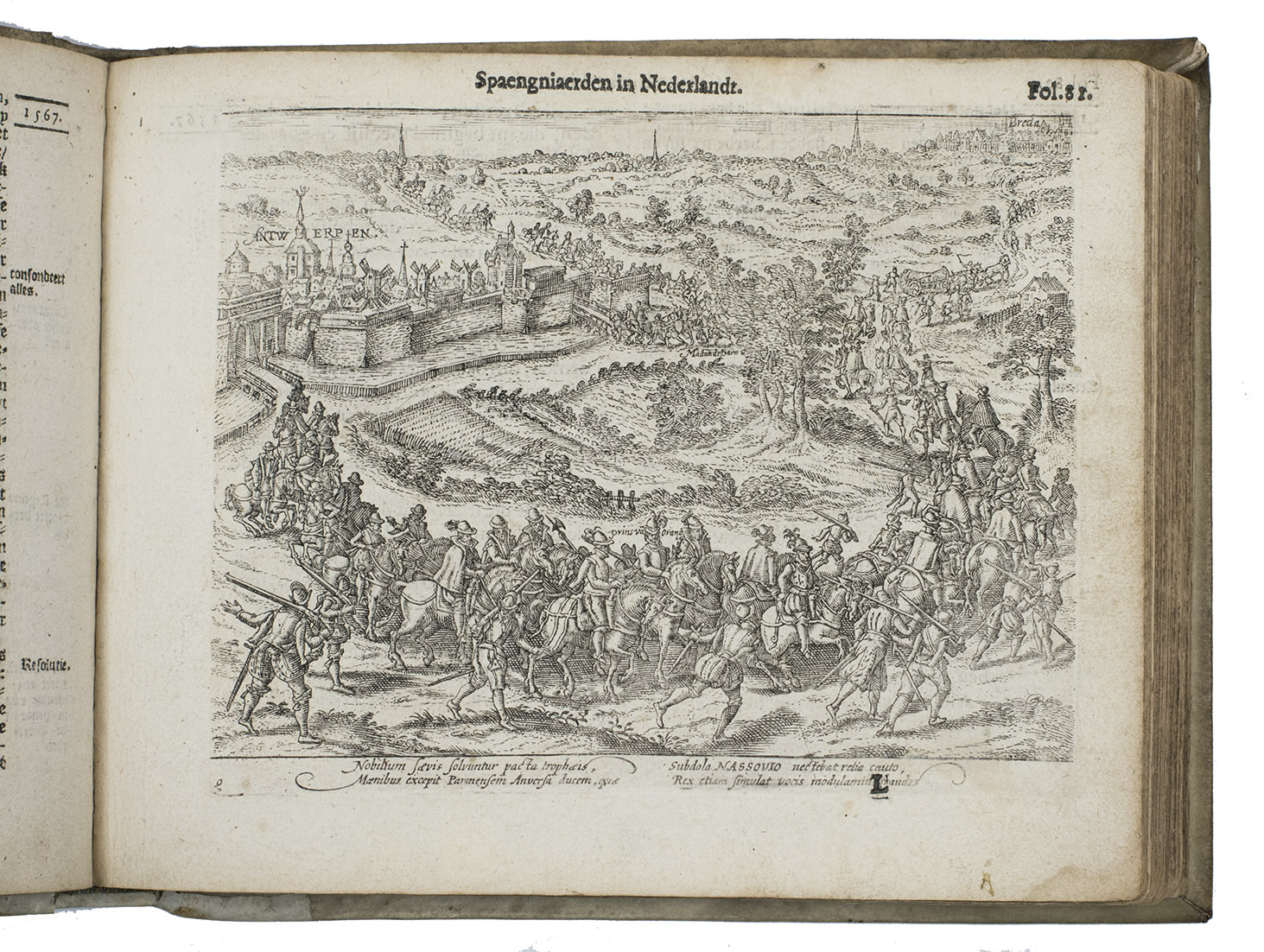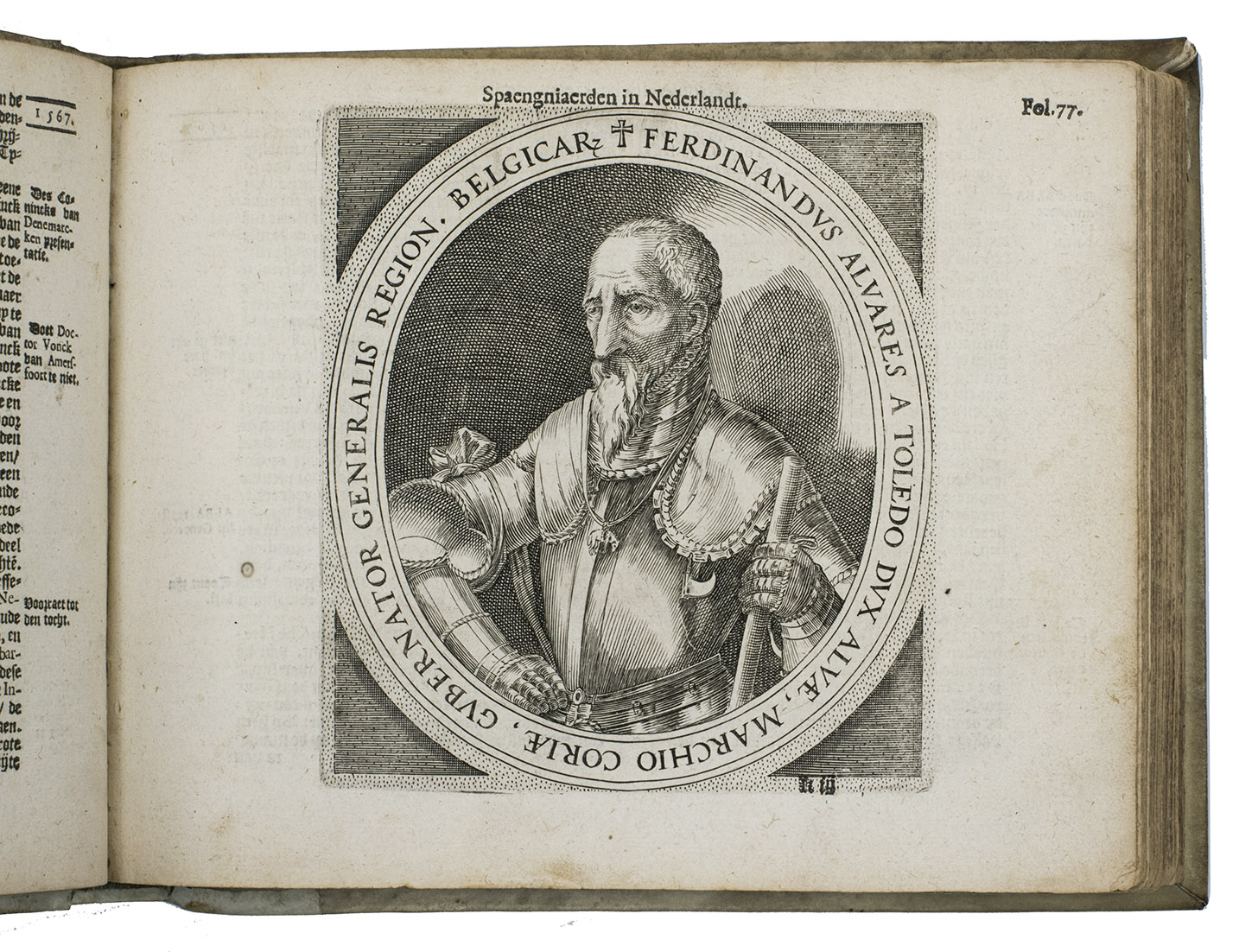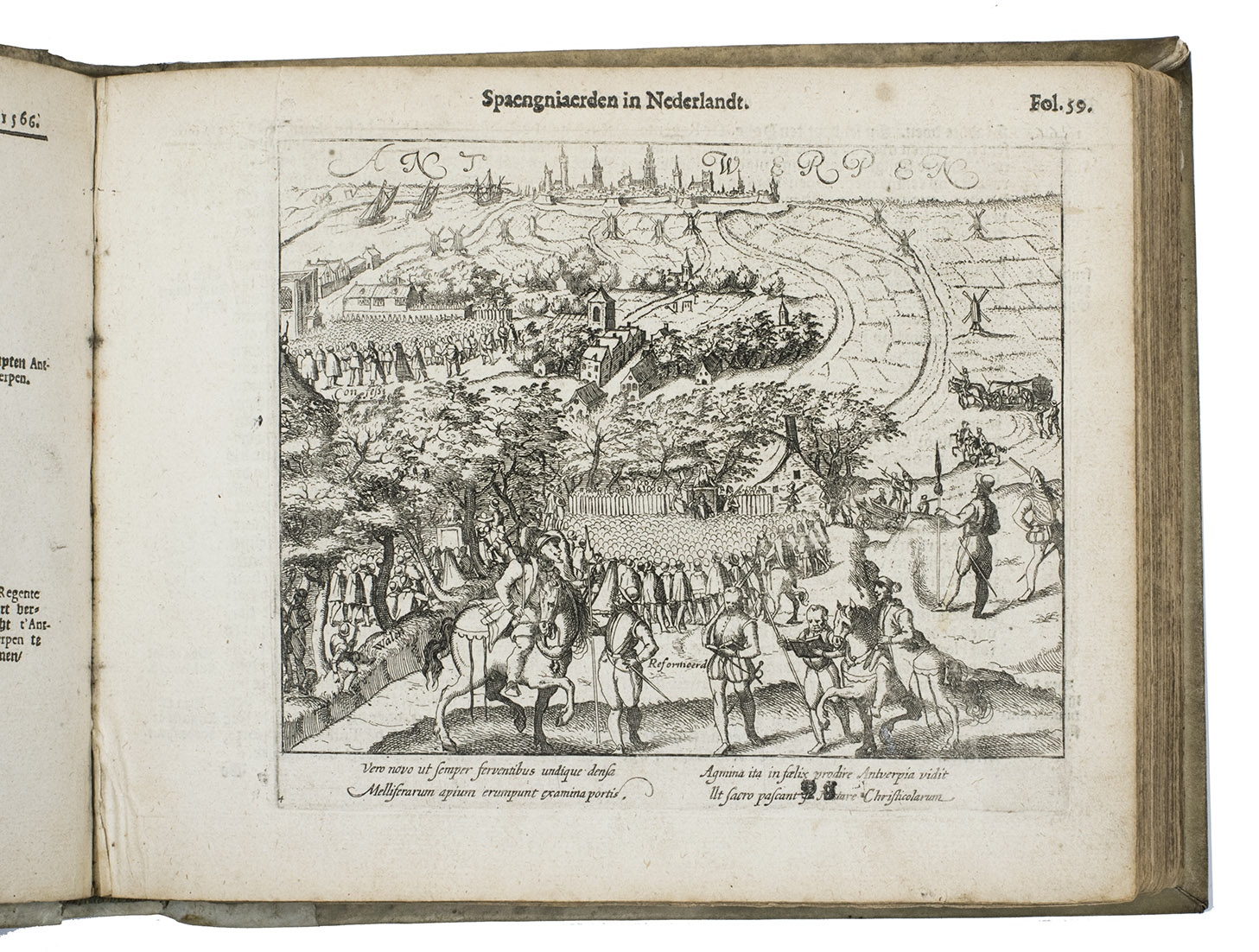[SPANISH TYRANNY].
Warachtighe beschrijvinghe ende levendighe afbeeldinghe vande meer dan onmenschelijcke ende barbarische tyrannije bedreven by de Spaengiaerden inde Nederlandes: onder de regieringen van den Keyser Carel V. Philips II. en Philips III. Coningen van Spaengien. [Half-title:] De onmenschelicke, barbarische, en grouwelijcke tyerannije der Spangniaerden in Nederlandt.
[Northern Netherlands (Amsterdam?)], [printed by Barent Otsz.?], 1621. Oblong 4to (18 x 22 cm). With an integral engraved frontispiece (15.5 x 20 cm, with 1 large and 3 small views of Spanish atrocities), letterpress title-page with a small bear as ornament (a mounted casting made from a woodcut), 36 full-page engraved city views on integral leaves showing Spanish atrocities (plate size about 13.5 x 16.5 cm, irregularly numbered 3 to 236 and not quite in numerical order), each with a 4-line Latin caption engraved in 2 columns, and 3 engraved portraits on integral leaves (plate size 14 x 12.5 cm). Early 18th-century vellum, sewn on 3 vellum tapes laced through the joints. [8], 278 pp.
€ 3,950
Rare complete copy of the first and only edition of a passionate and thoroughly illustrated chronicle of the atrocities committed by Spain in the Low Countries. Although it includes an account under the date 1396 and reports various events from 1518 to 1555 (the title-page indicates that it begins with the reign of the Holy Roman Emperor Charles V, which would be 1519), it quickly moves forward to the accession of King Philip II of Spain in 1556 and his draconian oppression of Protestants and of those who opposed Spanish rule in the Low Countries. It continues up to 1609, when Spain and the Netherlands agreed to a twelve-years' truce in the Eighty Years' War. The occasion for the publication was the expiration of that truce in 1621 and the resumption of the war. As a political polemic, it aimed to remind people of Spain's offenses, stoke fear and incite anti-Spanish feelings to gain support for the war. The Spanish atrocities (bad enough from any point of view) are therefore depicted as brutally and offensively as possible, both in words and in images. It includes many images of Spanish soldiers in armour torturing, mutilating (sometimes sexually) and slaughtering often naked men, women and children, and attacking and presumably raping women. It also depicts numerous sieges and battles from the first half of the Eighty Years' War and a few diplomatic events. The three portraits show the notorious governor of the Spanish Netherlands, Fernando, Grand Duke of Alba (1507-1582), his more moderate successor Luis de Requesens (1528-1576), and the murdered father of free Dutch Republic Willem de Zwijger (William the Silent), Prince of Orange (1533-1584). The lower two-thirds of the frontispiece shows a view through a colonade, with people being hanged, beheaded, burned at the stake, stretched on a rack (while one man tightens the rack, another forces water or worse down the victim's throat), one man hangs upside down from his knees, a woman hangs by her breasts, another (dark-skinned?) woman is held aloft, perhaps about to be impaled and bodies lie piled on the ground. Three smaller scenes above show an audience with the pope, a diplomatic(?) meeting around a table and an execution by beheading. The book offers an unambiguous picture of what the people of the Low Countries can expect if they again fall under Spanish rule.
With remnants of two red-orange wax seals on the first free end-leaf (apparently showing part of a coat of arms, not identified) and two more on the paste-down at the end, where a manuscript note also refers to p. 210 for the Spanish nobility. The frontispiece (on the recto of the half-title) has been cut down to the border of the engraving and mounted on a blank leaf with a window around the letterpress half-title, and the preliminary leaves are somewhat worn and tattered (one just touching the text at the fore-edge). Further with an occasional small stain in the text, some mostly marginal water stains and small worm trails at the head of the gutter margin in four quires (not reaching the text or images), but most of the leaves remain in good condition. A rare complete copy of an important and extensively illustrated record of Spanish atrocities as the Low Countries prepared to resume its war of independence from Spain, ultimately successful for the Dutch Republic. Bib. Belg. B83 (I, pp. 233-234: 4 copies); Dijstelberghe, Ursicula (https://hdl.handle.net/11245/1.273423) 1621-W1; STCN (9 copies, at least 2 incompl.); USTC 1033727 (9 copies, at least 2 incompl.); www.paulabels.nl/oude-drukken/zeventiende-eeuw (incompl.); for the portraits: Van Someran 45 (I, pp. 56-57); not in Simoni.
Related Subjects:
